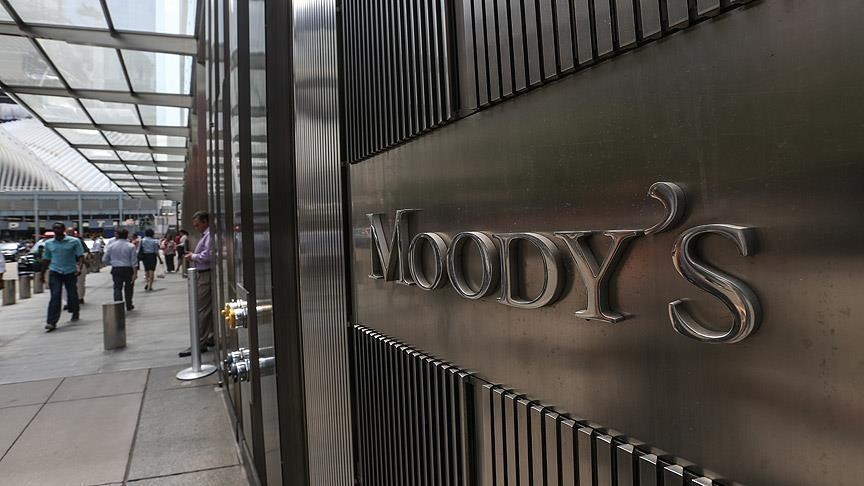
- Probability of recession remains higher than ‘during the best of times,’ Wurm tells Anadolu
- ‘We currently place recession odds at 25% in early 2024, lower than at the beginning of 2023 … but the figure is still elevated,’ says analyst
ISTANBUL
The US Federal Reserve pivoted to a dovish stance at its last meeting of 2023, but risks of a recession in the American economy remain for the next year despite indicators of several future interest rate cuts, according to an expert.
"The Federal Open Market Committee (FOMC) clearly pivoted dovish at its December meeting,” Martin Wurm, a director at Moody’s Analytics, told Anadolu.
“The Fed is, hence, signaling that interest rates have reached their terminal rate for the current cycle, a view which we have held since the early fall.”
On Wednesday, the US central bank skipped an interest rate hike for the fourth time this year, as widely expected, and kept its federal funds rate unchanged between the 5.25%-5.5% target range, the highest in 22 years.
The bank last made a rate hike of 25 basis points on July 26, after raising interest rates by a total of 525 basis points in 11 meetings from March 2022 to July 2023 to fight record inflation that climbed last summer to its highest in more than 40 years.
Wurm said Chair Jerome Powell’s comments, the FOMC statement’s language and the Fed’s median projections in December all suggest that inflation and economic activity will slow quicker than the bank had expected in September.
“Output, labor market and inflation data all suggest consistent slowing, but prices remain high and labor markets remain tight, and the Fed will, thus, make this decision dependent on incoming inflation and economic data over the next quarters,” he added.
Rate cuts in coming years
Powell, in his post-meeting press conference, said the question of lower interest rates has started “to come into view” and it was discussed by FOMC members during the year’s last meeting.
The Fed’s latest projections released Wednesday indicate that the bank can make at least three interest rate cuts of 25 basis points each in 2024, another four rate cuts during 2025 and three more in 2026.
Wurm said they predict the Fed will start cutting rates at its June meeting next year, when inflation will come closer to the central bank’s target of 2%.
“As monetary policy is now sufficiently tight to bring inflation under control over the next year, the timing of first cuts is coming into view. There is, however, still considerable uncertainty about when the Fed will be able to relax monetary policy at this point,” he said.
“Futures markets yesterday expected the Fed to cut six times over the year, which seems optimistic given that inflation still remains above target and that the Fed’s December projections predict only three cuts by the end of 2024.”
Recession risks remain
While Powell said economic forecasters in general expected a recession this year that did not materialize, he warned that the risk of a possible recession still exists for the world’s biggest economy.
“There is always a probability that there will be a recession in the next year. It is a meaningful probability no matter what the economy is doing,” he said.
“There are certainly risks. It’s certainly possible that the economy would behave in an unexpected way. It has done that repeatedly in the post-pandemic period.”
Wurm pointed out that the FOMC’s median projections in December were slightly more pessimistic compared to the ones in September, such as the expectation of a slowdown in real GDP growth to 1.4% for next year.
“The FOMC holds the view that the economy will slow further because the cumulative effects of monetary tightening so far have not fully played out. We broadly share the same view. But some slowing has already occurred in the current quarter, as the FOMC noted, and that also contributes to recession risks,” he explained.
The expert said the probability of recession remains higher than “during the best of times.”
“Even though we do not expect a recession for next year as the most likely outcome, headwinds remain – high interest rates weigh on household incomes and consumption, firm investment and the liquidity-constrained US banking system,” he noted.
“We currently place recession odds at 25% in early 2024. This is lower than at the beginning of 2023 when we predicted odds around 50%, but the figure is still elevated.”
Soft landing still possible
Despite the Fed’s high interest rates and a potential economic slowdown, a soft landing is still possible, a situation where a central bank raises interest rates too much and too high, leading to an economic slowdown but avoiding a recession.
“The most likely outcome will be a soft landing with slower economic growth, a slight uptick in unemployment, but no outright recession,” said Wurm.
“We, then, expect the Fed to gradually relax rates until monetary policy will return to a neutral stance by late 2026 to early 2027.”
The expert, however, concluded by warning that inflation is “not fully back to target” and could resurface if energy prices or wage growth accelerated.
Anadolu Agency website contains only a portion of the news stories offered to subscribers in the AA News Broadcasting System (HAS), and in summarized form. Please contact us for subscription options.







